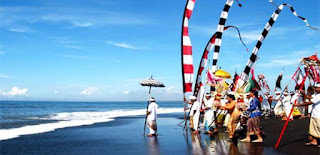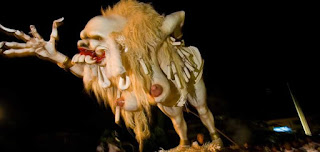NYEPI
Silence Day
Nyepi is a Balinese "Day of Silence" that is commemorated every Isakawarsa (Saka new year) according to the Balinese calendar (in 2015, it fell on March 21). It is a Hindu celebration mainly celebrated in Bali, Indonesia. Nyepi, a public holiday in Indonesia, is a day of silence, fasting and meditation for the Balinese. The day following Nyepi is also celebrated as New Year's Day.
On this day, the youth of Bali practice the ceremony of Omed-omedan or 'The Kissing Ritual' to celebrate the new year. The same day celebrated in India as ugadi.
Observed from 6 a.m. until 6 a.m. the next morning, Nyepi is a day reserved for self-reflection, and as such, anything that might interfere with that purpose is restricted. The main restrictions are no lighting fires (and lights must be kept low); no working; no entertainment or pleasure; no traveling; and, for some, no talking or eating at all. The effect of these prohibitions is that Bali's usually bustling streets and roads are empty, there is little or no noise from TVs and radios, and few signs of activity are seen even inside homes. The only people to be seen outdoors are the Pecalang, traditional security men who patrol the streets to ensure the prohibitions are being followed.
Although Nyepi is primarily a Hindu holiday, non-Hindu residents and tourists are not exempt from the restrictions. Although they are free to do as they wish inside their hotels, no one is allowed onto the beaches or streets, and the only airport in Bali remains closed for the entire day. The only exceptions granted are for emergency vehicles responding to life-threatening conditions and women about to give birth.
On the day after Nyepi, known as Ngembak Geni, social activity picks up again quickly, as families and friends gather to ask forgiveness from one another, and to perform certain religious rituals together.
Rituals
A deserted street at Nyepi.
Sanur Beach - deserted at Nyepi. Everything, except emergency services, closes down to observe a day of silence on Nyepi.
Tawur Kesanga, a ritual procession on the eve of Nyepi, celebrated a day before. The children carry flame torches, that lit bonfires to symbolically burn ogoh ogoh monster evil spirits.
First, The Melasti Ritual is performed 3–4 days beforehand. It is dedicated to Sanghyang Widhi Wasa. The ritual is performed in Pura (Balinese temple) near the sea (Pura Segara) and meant to purify Arca, Pratima, and Pralingga (sacred objects) belonging to several temples, also to acquire sacred water from the sea.
Second, The Bhuta Yajna Ritual is performed in order to vanquish the negative elements and create a balance with God, Mankind, and Nature. The ritual is also meant to appease Batara Kala by Pecaruan offering. Devout Hindu Balinese villages usually make ogoh-ogoh, demonic statues made of bamboo and paper symbolizing negative elements or malevolent spirits. After the ogoh-ogoh have been paraded around the village, the Ngrupuk ritual takes
place, which involves burning the ogoh-ogoh.
Third, the Nyepi Rituals are performed as follows:
Amati Geni: No fire or light, including no electricity
Amati Karya: No working
Amati Lelunganan: No travelling
Amati Lelanguan: Fasting and no revelry/self-entertainment
Fourth, the Yoga/Brata Ritual starts at 6:00 a.m. and continues to 6:00 a.m. the next day.
Fifth, the Ngembak Agni/Labuh Brata Ritual is performed for all Hindus to forgive each other and to welcome the new days to come.
Sixth and finally, The Dharma Shanti Rituals is performed after all the Nyepi rituals are finished.
























No comments:
Post a Comment